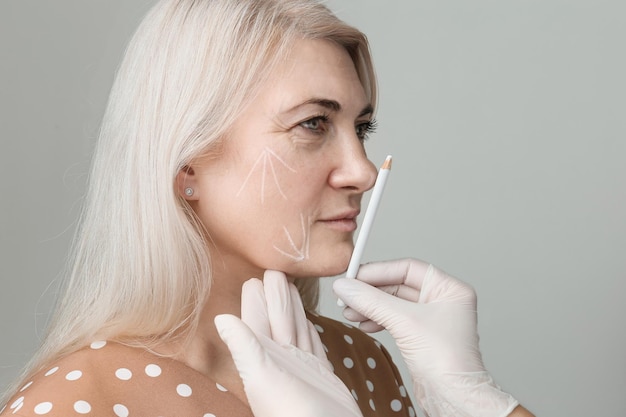Nose Tip Plasty is a popular cosmetic procedure that focuses on enhancing and refining the tip of the nose. It’s typically performed for those who are dissatisfied with the shape, size, or symmetry of their nasal tip. Unlike full rhinoplasty, which can alter the entire nose, this surgery isolates and improves the tip, resulting in subtle yet significant aesthetic changes. Let’s dive into what actually happens during Nose tip plasty in Abu Dhabi and what you can expect throughout the process.
1. Consultation and Pre-Surgery Preparations
Initial Consultation
Before undergoing Nose Tip Plasty, a consultation with a qualified cosmetic surgeon is essential. During this visit, the surgeon will assess your nasal anatomy, listen to your concerns and goals, and determine whether Nose Tip Plasty is suitable for you. They will explain the procedure in detail, show you before-and-after photos, and discuss any potential risks or complications.
Pre-Surgery Guidelines
Before surgery, you will be given specific instructions to prepare for the procedure. These may include:
- Avoiding certain medications: Some medications, especially blood thinners, should be avoided for a period leading up to the surgery.
- Fasting: You may be asked to fast for several hours before surgery if general anesthesia will be used.
- Arranging transportation: Since you may be drowsy after anesthesia, arrange for a friend or family member to take you home.
2. Anesthesia and Surgical Setting
Anesthesia Options
Nose Tip Plasty is generally performed under local anesthesia with sedation, meaning you’ll remain awake but relaxed. In some cases, general anesthesia may be used, especially if the procedure is more complex. Your surgeon will discuss the best anesthesia choice for you based on the surgery’s complexity and your comfort level.
Surgical Environment
The procedure is typically performed in an outpatient surgical center or a clinic with an accredited operating room. The environment is sterile and fully equipped for safe and effective surgery.
3. Surgical Procedure: Shaping the Nose Tip
Incision Placement
The surgeon begins by making small, discreet incisions inside the nostrils or along the columella (the strip of tissue between the nostrils). The incision placement depends on the technique the surgeon uses and whether they need to access the cartilage directly. The incisions are minimal, so scarring is usually invisible once healed.
Cartilage Reshaping and Refinement
Once the incisions are made, the surgeon works on reshaping the cartilage at the tip of the nose. The procedure can involve:
- Reducing cartilage: In cases where the nasal tip is bulbous or too wide, the surgeon may remove excess cartilage to narrow the tip and create a more defined shape.
- Adding cartilage: If the nasal tip lacks definition or projection, cartilage grafts may be used to provide more structure and lift.
- Repositioning cartilage: In cases of asymmetry or a drooping tip, the surgeon may reposition the existing cartilage to create better balance and alignment.
Suturing and Closure
After the desired shape is achieved, the surgeon will carefully close the incisions with dissolvable sutures. If external incisions are used (e.g., at the columella), the sutures will be removed after a week or so.
4. Post-Surgery Care and Recovery
Immediate Aftercare
Following the procedure, you will be monitored for a short time to ensure that you’re recovering well from the anesthesia. Most patients can go home the same day.
- Nasal Splints and Dressings: The surgeon may place a splint or dressing over the nose to support the newly shaped tip and reduce swelling. These are usually removed within a week.
- Swelling and Bruising: Some swelling and bruising around the nose and under the eyes are common after surgery. These side effects typically subside within a week or two.
Follow-Up Appointments
You’ll be scheduled for follow-up visits to monitor your progress, check for signs of infection, and remove any non-dissolvable sutures. These visits allow your surgeon to ensure that your healing is on track and that the nose tip maintains its new shape.
5. Expected Results and Healing Timeline
Visible Results
While the initial changes to the nose will be visible immediately after the surgery, the full results can take several weeks or months to become evident. Swelling will decrease over time, and the refined nasal tip will become more defined and harmonious with your facial features.
Healing Process
- First Week: Swelling and bruising are most pronounced. You’ll be asked to avoid strenuous activities and follow aftercare instructions carefully.
- 2-4 Weeks: Swelling gradually decreases, and you’ll be able to return to light activities. The shape of the tip becomes more visible.
- 3-6 Months: Full recovery is typically achieved, and the final shape of the nasal tip is fully revealed. Any residual swelling should be minimal, and the results are now stable.
Long-Term Results
Nose Tip Plasty offers long-lasting results, as the reshaped cartilage typically holds its new form. However, aging and lifestyle changes can slightly affect the appearance of the nose over time.
6. Conclusion: A Subtle Enhancement for Your Profile
Nose Tip Plasty is an effective and minimally invasive way to improve the shape, size, and symmetry of the nasal tip, leading to a more balanced and aesthetically pleasing appearance. Whether you want to reduce a bulbous tip, lift a drooping one, or enhance overall nasal definition, this procedure provides subtle yet transformative results. With careful planning, proper post-surgery care, and realistic expectations, Nose Tip Plasty can significantly improve the appearance of your nose and contribute to a more harmonious facial profile.
